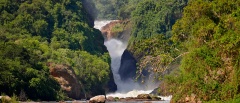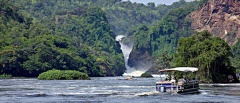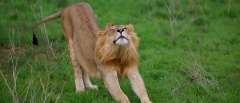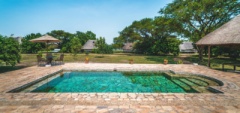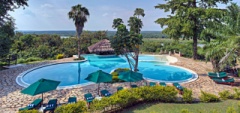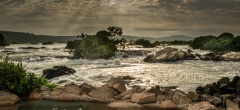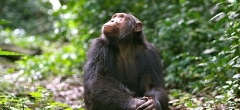Murchison Falls National Park
A unique park of savannahs, forests, lakes and waterfalls
Located in the northern region of Uganda, Murchison Falls is a waterfall found on the course of the great Nile. This is where the Nile squeezes through a narrow 8 metre gorge and cascades down to become a placid river and often a trademark rainbow.
Similar to Queen Elizabeth National Park, there are a variety of ecosystems that make up this park. In the northern section, the park contains savannahs, acacia forests and riverine woodlands. The south is characterized by denser forests, woodlands and lakes.
The park was first categorised as a game reserve in 1926 so it is Uganda’s largest and oldest conservation area. Lions, leopards, hyena, hartebeest, hippo, crocodile, elephants, chimpanzees, giraffes and many more can be found here which is why, although it is a little harder to get to in terms of logistics, it is often included in a Uganda itinerary.
The bird life, as with most of Uganda, is incredible in Murchison Falls. Over 450 birds can be found in this area, including the Secretary bird, the Black Chested Snake Eagle, Tawny and Marshal Eagles, Carmine and Swallow-Tailed Bee-eaters and many more. These can be seen during game drives or better yet, from a boat ride, guided walk or whilst enjoying a picnic in the African wilderness.
The best time to go to Murchison Falls National Park is the period between June to September, and then again between December and February. During these dry seasons, the wildlife is much easier to see because they congregate around the water sources and are drawn out of the dense bushes. The mains usually fall from March to May and then again from September to November, so this time has fewer visitors. That said, these months are great for bird watching in the Murchison’s Falls National Park as there are various migratory birds in the park at this time, and many of the resident birds usually breed during this time.
Like most of East Africa, the period of March through to May is the rainy season. The park becomes less accessible and most of the lodges are closed during these months so staff can go home to their families, or the lodge can undergo some renovation work.

